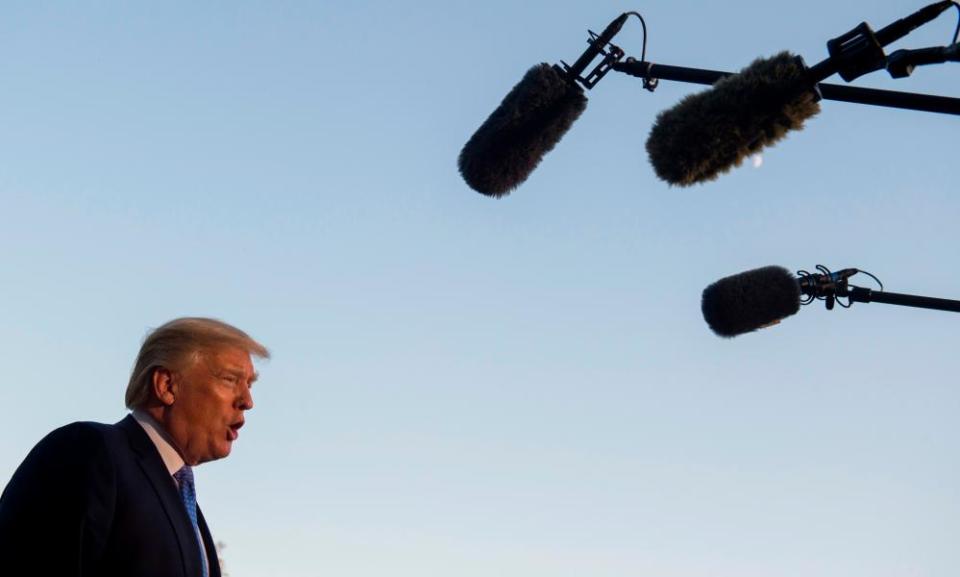Big winner under Trump's tax plan for 'everyday Americans': Donald J Trump
The president has claimed he won’t benefit from the White House plan to cut taxes for ‘hardworking Americans’. Here’s what’s wrong with that assertion

Donald Trump has outlined plans for the biggest overhaul of the US tax system since the Ronald Reagan era. The cuts were aimed at “everyday hardworking Americans”, Trump told the crowd in Indiana on Wednesday. But even a cursory look at the still developing plan shows the biggest beneficiary is likely to be ... Donald Trump. Here’s why.
Rich working people
“My plan is for working people and my plan is for jobs,” Trump said. “I don’t benefit. Very, very strongly I think there’s very little benefit for people of wealth.” Wrong! as Trump would say.
Trump has proposed cutting the tax rate of so-called “pass-through” businesses to 25%. Pass-through businesses don’t pay tax as businesses but pay at the rate of tax paid by the owner. The highest rate they currently pay is close to 40%.
Most businesses are pass through, but 96% of businesses already pay less than 25% tax and only 4% of them currently pay the highest rate of tax. Those businesses are the ones controlled by high net worth individuals, hedge fund managers, corporate lawyers and rich people who structure their businesses as partnerships or limited liability companies. Trump himself controls 500 pass-through businesses.
Kansas passed a similar tax cut in 2012 and it almost broke the bank. The cuts had to be reversed as the state’s coffers dried up.
“Trump is carving out a special loophole for his own businesses and calling it a small-business tax cut,” said TJ Helmstetter of the group Americans For Tax Fairness.
Trump has also proposed cutting the alternative minimum tax (AMT). The AMT is widely disliked because of its complexity but its basic aim is good. The idea is to make sure that very rich people are not able to avoid paying any tax at all by using the abundant loopholes available to their armies of accountants. AMT was the reason Trump had to pay $31m in taxes in 2005, according to documents given to MSNBC’s Rachel Maddow. Well, he won’t have to worry about that any more if he gets his way.
Rich dead people
Trump – and the Republican party – have been keen to do away with the estate tax for years. The so-called “death tax” hurts American families, Trump has said on numerous occasions. Sure. But only rich ones. The tax is currently set at 40% on estates worth $5.49m for an individual or $10.9m for a couple. It only affects 0.2% of the US population.
It will cost $240bn to remove the estate tax over 10 years – roughly the same amount as the Trump administration’s plans to cut food stamps would save.
Who pays for it?
The Trump tax plan will have to be paid for somehow. The national debt is now more than $20tn and the Committee for a Responsible Federal Budget estimates the plan will add between $3tn and $7tn to the national debt over the next decade. Where does that money come from? The Trump administration has proposed $5tn in cuts to non-military spending, meaning schools, Medicaid healthcare, social security, disability insurance.
If the plan is passed – and that’s a big if – America’s middle class will be paying for these tax cuts for generations to come.

